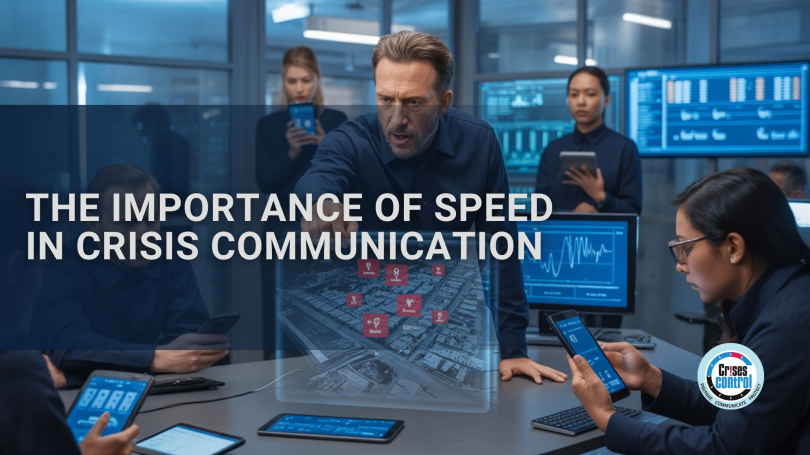The 2011 Fukushima Daiichi nuclear disaster was a stark reminder of the importance of speed in crisis communication. A magnitude 9.0 earthquake and tsunami struck the coast of Japan on March 11, 2011, causing widespread damage, including to the Fukushima Daiichi Nuclear Power Plant. The plant’s cooling systems were damaged, and three reactors melted down. It was estimated that over 100,000 people were exposed to radiation.
The Japanese government’s slow response to the disaster led to confusion and fear among the public, and it took several days to get a full understanding of what was happening. This slow communication put people’s lives at risk and caused widespread economic and environmental damage.
While Fukushima is an extreme case, it embodies the fundamental principle that applies to crises of all scales: swift and effective communication is paramount. This is especially true for businesses of all sizes, which face an array of potential crises, from data breaches and product recalls to natural disasters.
When a crisis strikes, the ability to communicate rapidly and effectively with customers, employees, and the public is the linchpin of crisis management. Speed is essential to protecting your reputation, minimising damage, and ensuring the safety of your stakeholders.
The Importance of Speed in Crisis Communication
Why is speed such an indispensable element in crisis communication?
Reducing Confusion and Anxiety
In the initial moments of a crisis, confusion can be rampant. People desire clarity and reassurance. Swift communication fills this void, providing accurate information that prevents speculation and the proliferation of misinformation. This, in turn, alleviates panic and contributes to the management of the situation.
Minimising Damage
The adage “time is of the essence” rings especially true in the context of a crisis. The longer it takes to convey information about a crisis, the greater the potential for damage to spread. Take a data breach, for instance. Delayed communication with affected customers can lead to a loss of trust, causing them to seek alternatives from competitors. The speed of your response can significantly influence the trajectory of the crisis.
Ensuring Stakeholder Safety
During a crisis, keeping your stakeholders safe and informed is paramount. Whether you’re dealing with a product recall, a cybersecurity breach, or a natural disaster, timely communication is the key to safeguarding your customers, employees, and partners.
Why Using the Right Communication Channels Matters in Crisis Communication
When communicating during a crisis, it is important to use the right channels. The right channels will depend on the nature of the crisis and your target audience.
For example, if you are communicating with your customers about a data breach, you may want to use email, social media, and your website. If you are communicating with your employees about a natural disaster, you may want to use text messaging, email, and your company intranet.
It is also important to have a backup plan in case your primary communication channels go down. For example, if your website goes down during a data breach, you need to have another way to communicate with your customers.
Adopting Technology to Improve Crisis Communication
Technology can help you to communicate more quickly and effectively with your stakeholders. One of the most important technologies to adopt is a mass notification system. Mass notification systems allow you to send messages to large groups of people quickly and easily, through a variety of channels, including:
- Email: Mass notification systems can send emails to large groups of people in seconds. This is a good option for communicating with employees, customers, and other stakeholders who have provided you with their email addresses.
- SMS: Mass notification systems can also send text messages to large groups of people. This is a good option for communicating with stakeholders who may not have access to email or who may be on the go.
- Voice: Mass notification systems can also make automated voice calls to large groups of people. This is a good option for communicating with stakeholders who may not have access to email or text messaging, or who may have difficulty reading or hearing.
- Social media: Mass notification systems can also send messages to social media platforms, such as Twitter and Facebook. This is a good option for communicating with a wide audience, including stakeholders who may not be familiar with your company or your website.
In addition to the variety of channels that mass notification systems support, they also offer a number of other benefits, including:
- Speed: Mass notification systems can send messages to large groups of people in seconds. This is essential for communicating during a crisis, when you need to get information out to your stakeholders as quickly as possible.
- Accuracy: Mass notification systems can help you to ensure that your messages are accurate and consistent. This is important for maintaining credibility and trust with your stakeholders.
- Scalability: Mass notification systems can be scaled to meet the needs of businesses of all sizes. This means that you can use a mass notification system even if you have a large number of stakeholders.
Overall, mass notification systems are a powerful tool that can help businesses to improve their crisis communication strategy. By using a mass notification system, businesses can communicate quickly and effectively with their stakeholders through a variety of channels, which can help to reduce confusion and anxiety, minimise damage, and ensure the safety of their stakeholders.
Conclusion
Are you prepared to strengthen your crisis communication strategy? Request a live demo of Crises Control. Our comprehensive crisis management platform empowers your organisation to respond promptly and effectively during a crisis. At Crises Control we look forward to helping you boost your business’s resilience and safety.







